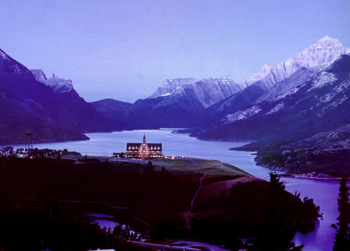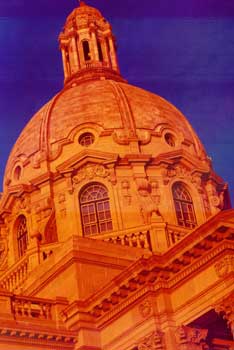|

The
old Prince of Wales Hotel
overlooks Waterton-Glacier
International Peace Park,
Alberta. Occupied for thousands
of years by the Blackfoot
Tribe, the "land of
shining mountains"
is a sanctuary for huge
old spruce and fir and some
of Canada's most interesting
wildlife.
After
World War II, immigrants
continued to come to Alberta
from different parts of
the world, including Asia
and the Caribbean. While
Alberta’s economy has continued
to expand in many areas,
oil still plays a large
role in its prosperity.
When the price of oil is
high, Alberta prospers.
When it drops, as it did
in the mid-1980’s, times
may be difficult.

Edmonton
is the capital of Alberta.
It is a vibrant metropolis
which has, from its beginning
as the most important fur
trading post in the West,
been a vital gateway to
the north. The impressive
Legislative Building, is
set in pleasant gardens
overlooking the North Saskatchewan
river.
In
the 1990’s, improved oil
prices and the growth of
new industries helped make
Alberta’s economy one of
the strongest in Canada.
Worldwide, Alberta is the
18th largest
producer, the second largest
natural gas exporter, and
in 1998 accounted for 69%
of all the energy produced
in Canada. Alberta’s oil
sands reserves contain an
estimated 1.7 trillion barrels
of bitumen in place.
Previous
Page
|
